Housing Affordability Holds Steady at a 10-Year Low in the Fourth Quarter
A modest increase in interest rates offset a slight decline in home prices to keep housing affordability essentially level in the fourth quarter of 2018 and still hovering at a 10-year low, according to the National Association of Home Builders (NAHB)/Wells Fargo Housing Opportunity Index (HOI).
In all, 56.6 percent of new and existing homes sold between the beginning of October and end of December were affordable to families earning the U.S. median income of $71,900. This is little changed from the 56.4 percent of homes sold in the third quarter that were affordable to median-income earners.

The national median home price moved down from $268,000 in the third quarter of 2018 to $263,000 in the fourth quarter. At the same time, average mortgage rates rose by 17 basis points in the fourth quarter to 4.89 percent from 4.72 percent in the third quarter. This was the fourth straight quarterly rate hike and the highest rate level since the second quarter of 2011.
Youngstown-Warren-Boardman, Ohio-Pa. supplanted Syracuse, N.Y. as the nation’s most affordable major housing market. There, 92.7 percent of all new and existing homes sold in the fourth quarter were affordable to families earning the area’s median income of $60,100. Meanwhile, Cumberland, Md.-W.Va. was rated the nation’s most affordable smaller market, with 94.9 percent of homes sold in the fourth quarter being affordable to families earning the median income of $55,500.
San Francisco, for the fifth straight quarter, was the nation’s least affordable major market. There, just 6 percent of the homes sold in the fourth quarter of 2018 were affordable to families earning the area’s median income of $116,400.
All five least affordable small housing markets were also in the Golden State. At the very bottom of the affordability chart was Santa Cruz-Watsonville, where 8.5 percent of all new and existing homes sold were affordable to families earning the area’s median income of $81,400.
Overall, solid job growth and the rising number of households are fueling housing demand, but builders are struggling to build at lower price points because of expensive regulations, land, and labor.
Visit nahb.org/hoi for tables, historic data and details.
This post brought to you by NAHB Eye on Housing. HBA of Greater Springfield, MO (HBA Home Pro) and NAHB member.

